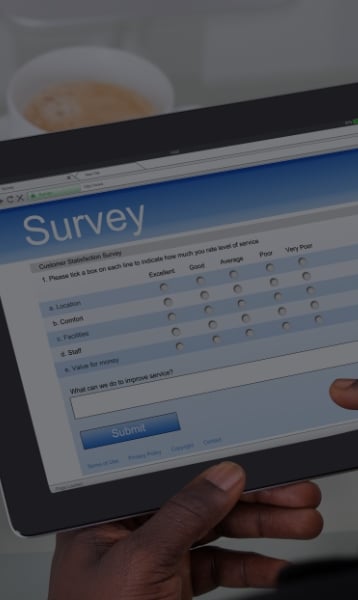This interactive portal improves the analytic experience so you can easily interact with data.
The Hidden Mental Health Benefits of Remote Work: What the Data Really Show

.jpg?width=120&name=Carole%20(2).jpg)
Carole Bonner
Recent empirical research has definitively answered one of the most contentious questions in today's workplace: Is remote work good for employee wellbeing? The evidence strongly supports flexible work arrangements!
According to a comprehensive study by the Integrated Benefits Institute (IBI) examining over 449,000 U.S. workers, the data reveals a clear pattern:
- Employees working entirely in-person face the highest risk of anxiety and depression
- Those working from home 3-4 days per week have 27% lower odds of experiencing these mental health challenges
- Even fully remote workers show better mental health outcomes, with 10% lower odds of anxiety or depression
The study's findings on workplace loneliness challenge common assumptions. Despite concerns that remote work might increase isolation, the data tells a more complete story:

- Employees working from home 3-4 days per week reported the lowest loneliness rates (7.9%)
- Full-time in-person workers experienced the highest loneliness rates (12.6%)
- Those working from home 1-2 days per week were 32% less likely to feel lonely
When we first looked at the numbers, it seemed that where people work might affect their mental wellbeing. People working entirely in the office reported feeling more lonely, anxious and depressed compared to those working remotely some or all of the time.
However, when we dug deeper and looked at the whole picture - including factors like social connections, support systems, and workplace policies - we found something interesting: The actual location where someone works isn't the main factor affecting their mental health.
What really seems to matter is having flexibility and support at work. This could include:
- Flexible schedules that let employees manage their work and personal responsibilities
- Supportive managers who understand employee needs
- Strong social connections with coworkers, whether in-person or virtual
- Clear communication channels
- Access to mental health resources
The key takeaway is that creating a mentally healthy workplace isn't just about where employees work - it's about building a supportive environment that gives people the flexibility they need to thrive. Companies should focus on developing comprehensive support systems rather than assuming that any one work arrangement will automatically lead to better mental health outcomes.

Workplace flexibility has a range of positive effects that go beyond just improving mental health. Studies show that when employees have flexible work options, they tend to be more engaged in their jobs. This flexibility also helps reduce absenteeism, especially for caregivers, who are less likely to miss three or more workdays when they can adjust their schedules to fit their needs. For many employees, particularly women, work-life balance is a top priority; in fact, 58.8% of women consider it crucial. However, rigid work schedules can make it difficult for employees to take part in health programs offered at work. Time constraints are a major barrier for 60.9% of employees, preventing them from engaging in these valuable initiatives. Overall, offering flexibility in the workplace not only boosts employee engagement but also supports the well-being of everyone involved.
The pandemic forced a massive experiment in remote work. Now, with robust data from multiple large-scale studies, we can see that flexible work arrangements, when properly structured, significantly benefit both employee mental health and organizational success.
What About those Employers Who Cannot Offer This Kind of Flexibility
While employees with flexibility in their work schedule and location tend to show higher engagement and reduced absenteeism, employers must balance these benefits against operational requirements and industry constraints. Not all businesses can offer complete flexibility - manufacturing facilities need on-site workers to operate equipment, healthcare providers require in-person patient care, retail stores need staff to assist customers, and many service industries depend on face-to-face interactions.
For these industries, research suggests that the focus should be on finding ways to build resources within their operational constraints.
Alternative Flexibility Options

For industries requiring significant on-site work the goal is to identify opportunities for flexibility that work within each organization's unique business model and industry requirements, rather than assuming a one-size-fits-all approach to workplace flexibility.
Rather than viewing remote work as a temporary accommodation or necessary evil, forward-thinking employers recognize it as a powerful tool for supporting employee wellbeing and building more resilient, engaged workforces. The research makes clear - the future of work is flexible, and the benefits are measurable.
Note: Work arrangement was significantly associated with anxiety/depression (F(3, 223748) = 50.44, p < .001) and loneliness (F(3, 44683) = 10.32, p < .001). Compared to fully in-person work, working from home 3-4 days per week was associated with 27% lower odds of anxiety/depression (OR = 0.73, 95% CI [0.69, 0.77], p < .05) and 40% lower odds of loneliness (OR = 0.60, 95% CI [0.49, 0.73], p < .001). Data from the Integrated Benefits Institute's study of 449,421 U.S. workers from January 2023 to April 2024 (Bonner, 2024).
- February 2025 (1)
- December 2024 (2)
- March 2024 (1)
- January 2024 (1)
- October 2023 (3)
- September 2023 (1)
- July 2023 (1)
- May 2023 (1)
- April 2023 (1)
- February 2023 (1)
- January 2023 (1)
- December 2022 (1)
- November 2022 (1)
- October 2022 (1)
- September 2022 (1)
- August 2022 (2)
- July 2022 (1)
- June 2022 (3)
- May 2022 (2)
- April 2022 (1)
- March 2022 (2)
- February 2022 (1)
- January 2022 (1)
- December 2021 (1)
- November 2021 (1)
- October 2021 (1)
- August 2021 (1)
- July 2021 (2)
- June 2021 (1)
- May 2021 (1)
- April 2021 (1)
- February 2021 (1)
- January 2021 (3)
- August 2020 (1)
- July 2020 (3)
- May 2020 (1)
- April 2020 (4)
- March 2020 (4)
- February 2020 (1)
- January 2020 (1)
- November 2019 (2)
- July 2019 (4)
- June 2019 (3)
- May 2019 (2)
- April 2019 (2)
- March 2019 (3)
- February 2019 (7)
- January 2019 (9)
- November 2018 (6)
- October 2018 (3)
- September 2018 (3)
- August 2018 (2)
- July 2018 (4)
- March 2018 (22)
- February 2018 (1)
- October 2017 (1)
- September 2017 (1)
- August 2017 (1)
- July 2017 (1)
- June 2017 (3)
- May 2017 (2)
- April 2017 (1)
- March 2017 (29)
- February 2017 (1)
- January 2017 (1)
- December 2016 (3)
- November 2016 (2)
- October 2016 (1)
- August 2016 (3)
- May 2016 (2)
- April 2016 (8)
- February 2016 (29)
- January 2016 (1)
- December 2015 (2)
- July 2015 (4)
- June 2015 (6)
- May 2015 (1)
- April 2015 (1)
- March 2015 (22)
- February 2015 (1)
- January 2015 (1)
- December 2014 (1)
- November 2014 (1)
- October 2014 (2)
- September 2014 (1)
- August 2014 (3)
- July 2014 (2)
- June 2014 (1)
- May 2014 (2)
- April 2014 (4)
- March 2014 (8)
- February 2014 (1)
- January 2014 (1)
- December 2013 (2)
- November 2013 (2)
- October 2013 (4)
- August 2013 (1)
- July 2013 (3)
- May 2013 (13)
- March 2013 (2)
- February 2013 (9)
- January 2013 (1)
- December 2012 (1)
- November 2012 (1)
- June 2012 (1)
- May 2012 (1)
- April 2012 (1)
- August 2011 (1)
- June 2011 (3)
- May 2011 (1)
- April 2011 (2)
- March 2011 (1)
- February 2011 (2)
- November 2010 (1)
- October 2010 (1)
- June 2010 (1)
- March 2010 (1)
- January 2010 (2)
- October 2009 (1)
- July 2009 (1)
- May 2009 (2)
- March 2009 (1)
- January 2009 (1)
- November 2008 (1)
- October 2008 (2)
- September 2008 (1)
- August 2008 (1)
- June 2008 (1)
- May 2008 (1)
- April 2008 (2)
- March 2008 (1)
- February 2008 (1)
- January 2008 (2)
- December 2007 (1)
- November 2007 (1)
- October 2007 (1)
- September 2007 (1)
- August 2007 (1)
- July 2007 (1)
- June 2007 (1)
- May 2007 (2)
- March 2007 (1)
- February 2007 (1)
- January 2007 (1)
- August 2006 (1)
- June 2006 (1)
- March 2006 (1)
- May 2005 (1)
- July 2004 (1)
- 2019 (1)
- 2020 (1)
- Absence (2)
- Absence Management (4)
- Article (105)
- Behavioral Health (2)
- Benchmarking (9)
- Benefit Design (11)
- Benefits + Plan Design (26)
- Blog (72)
- Burnout (1)
- Business Performance (2)
- Business Value of Health (21)
- Cancer (3)
- Cardiovascular Disease (4)
- Care Management (1)
- Care Quality (1)
- Caregiving (3)
- Case Studies (7)
- Chronic Conditions (2)
- Communicating H&P to Business Leaders (1)
- Community Health (2)
- Comparative Effectiveness Research (1)
- Connecting HR to Operations (1)
- COVID-19 (13)
- Culture of Health (1)
- Culture of Health + Safety (29)
- Data (1)
- Data Driven Decision Making (1)
- Depression (5)
- Diabetes (5)
- Disability Leave (41)
- Disease Burden (1)
- Employer Perspectives (5)
- Engage Employees (45)
- Event Recap (2)
- Exchanges (4)
- Family + Parental Leave (8)
- FMLA (2)
- Headache (1)
- Health + Productivity Management (54)
- Health Inequities (1)
- Healthcare (2)
- Healthcare Costs (17)
- HPM Survey (3)
- IBI Agenda (2)
- IBI Presents (9)
- immunization (1)
- Industry Profile (1)
- Integrating Health Data (12)
- Invest In Health (52)
- Leave Benchmark Survey (1)
- Linking Health to Business Performance (1)
- Make The Business Case (54)
- Manage Absence (70)
- Market Perspectives (29)
- Maternity (1)
- Measurement (2)
- Measuring Outcomes (21)
- Medication Adherence (1)
- Mental + Emotional Health (16)
- Mental Health (7)
- Migraine (2)
- MSD (1)
- MSK (1)
- Multi-Study Spotlight (23)
- Musc (1)
- Musculoskeletal Disorders (12)
- National Forum (1)
- Obesity (2)
- Occupation (1)
- Online Events (17)
- Pain Management (1)
- Patient Resources (1)
- Patient-Centered (2)
- Pharmacy (5)
- Physical Activity (1)
- Popular and Timely (11)
- Practical Guidance (6)
- Pregnancy (1)
- Presenteeism (1)
- Presenteeism / Job Performance (3)
- Preventive Care (1)
- Previous Forums (109)
- Productivity (46)
- Provider Quality (1)
- Regional Events (1)
- Research (22)
- Research Based Healthcare Evidence (1)
- Research Report (2)
- Research Review (3)
- Return to Work (19)
- Risk Management (11)
- SAW / RTW (1)
- Scholarly Work (2)
- Short-Term Disability (2)
- Sick Leave (15)
- Social Determinants of Health (1)
- Stay at Work (1)
- Stay-at-work / Return-to-work (1)
- STD (2)
- Strategies (1)
- Stress (2)
- Suicide (2)
- Surveys (3)
- Talking to Leadership (4)
- Telehealth (3)
- Understand Health Risks (34)
- Value-based Benefit Design (1)
- Vendor Integration (1)
- Video (3)
- virtual care (1)
- virtual health (1)
- Weight Control (5)
- Well-being (16)
- Wellness + Lifestyle (17)
- Working Remotely (4)
- Workplace Culture of Health (2)
- Workplace Health Programs (1)
- Admin
- Brian Gifford
- Brian Gifford Ph.D. Director, Research and Analytics, IBI
- Candace Nelson
- Carole Bonner
- Carolyn Ho
- Carolyn Ho, IBI Communications Lead
- Erin Peterson
- Erin Peterson, Researcher
- Gia Harris
- IBI
- IBI Member
- IBI Research Team
- Integrated Benefits Institute
- Jennifer Santisi
- Jim Huffman
- Kelly McDevitt, IBI President
- Marshall Riddle
- Nicole Nicksic, PhD, MPH Research Lead
- Sera-Leigh Ghouralal
- Thomas Parry, PhD Senior Advisor, Integrated Benefits Institute

























.png?width=900&name=Copy%20of%202024%20Research%20Priorities%20Banner(5).png)

